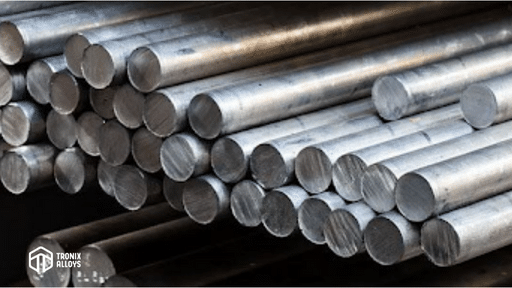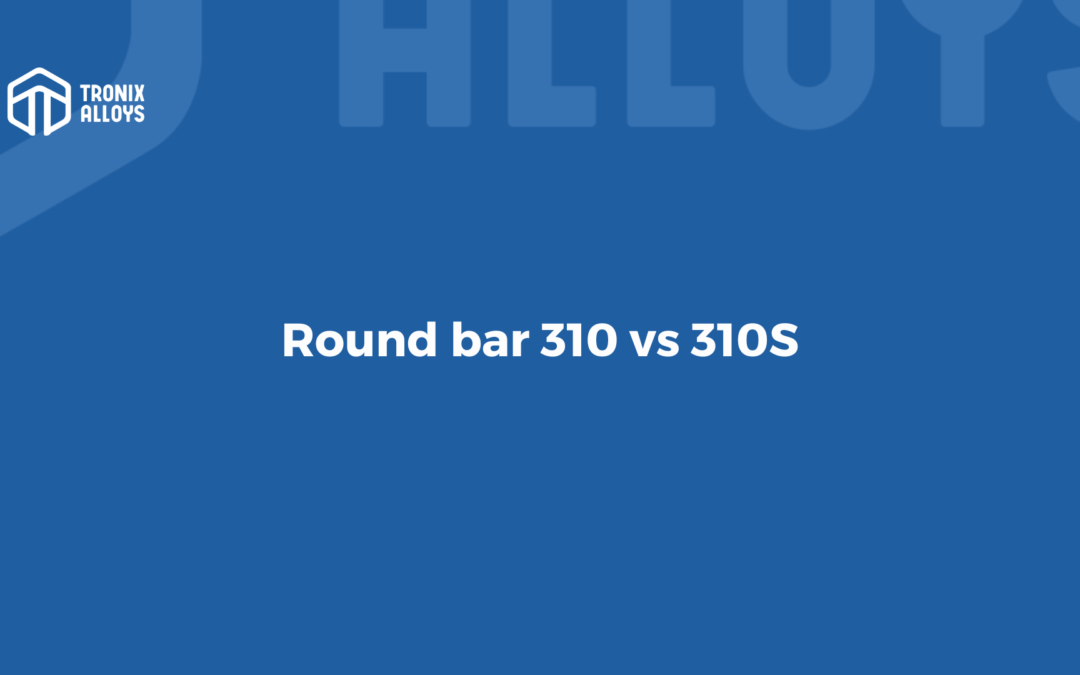
With the stainless steel 310 round bar, oxidation can be minimized in continuous application processes with temperatures as high as 1150 degrees Celsius, ensuring that the alloy will resist oxidation in continuous application processes. If reducing sulfur gases are not present in the application environment, the 310 stainless round bar has a good oxidation resistance, and is therefore a good choice for use in high temperature applications. Apart from being used in continuous application processes, astm a276 type ss 310 steel can also be used for intermittent service applications, wherever temperatures could rise as high as 1040 degrees Celsius in intermittent applications.
There are usually applications for SS 310 round bars that involve the alloys being present in moist corrodents. These moist corrodents are in temperatures below what is normally considered to be a high temperature range. The AISI 310 round bar has excellent toughness, even down to cryogenic temperatures, like other austenitic stainless steel grades. Even though other grades of stainless steel are usually used in cryogenic environments to handle applications that require temperature control.
These grades are mainly designed to be used in aqueous media due to the high chromium content added to them. This is also intended to improve their high temperature properties, but also to provide them with good corrosion resistance. As a result of the high chromium content added to the 310 round bar, the pre-pitting resistance number is approximately 25, and the seawater resistance number of stainless steel grade 310 is approximately 22°C, which is comparable to that of stainless steel grade 316.
There is a possibility that the grade 310s stainless steel sheet flat bar might crack due to stress corrosion, but it is known to be more resistant than grades 304 and 316 stainless steel flat bars
As the name suggests, 310 round bars are austenitic stainless steel grades. The 310 round bar is designed with a chemical composition which includes chromium, carbon, manganese, nickel, phosphorous, sulfur, silicon, and iron, that results in the product having a hardness of 305.
It has a circular cross-sectional area, so it exhibits superior resistance to corrosive and oxidative media across stress-induced setups when it comes to 310 stainless steel round bar. SUS 310 Rounds are able to resist temperatures up to 1150 degrees Celsius and can be utilized throughout the world at high temperatures. As a result, these components are capable of performing well in carburizing conditions. In addition to having an aesthetically appealing appearance, this grade of polished bar can be manufactured in various finishes, which allows you to choose from. We have been able to customize these bars in a variety of shapes and sizes in order to meet the needs of our customers.
The ASTM A276 type 310 Hex Bar is a unique bar having 6 sides. Due to their geometrical properties, these bars can be easily moved and rotated within the system in order to be of maximum benefit. The AMS 5521 Hex Bar is highly dimensionally accurate and is widely used in chemical equipment, aerospace, and maritime industries, among others. In packing and manufacturing units, it is common to find 304 Stainless Steel Square Bars because the cross-section is square. These bars are common features. We have created a rectangular cross-section flat bar designed with 310 stainless steel rod. The flat bar is lighter than square bars and has a lower thickness. Stainless steel flat bars have a rectangular cross-section that provides strength and durability. The ASTM A276 UNS S31008 Rectangle Bar, a non-pressurized module, is designed for applications that aren’t usually concerned with items of precise size and tolerances. It is produced with the use of the latest technology and the best raw materials in order to produce these bars. As per the requirements of AISI 310S, a low carbon grade of rod is positioned in a cylindrical configuration and elongated for further stability in the system. This rod is widely used for the stability of the system.
ASTM A276 310s Round Bar Definition

As a renowned manufacturer, exporter, and supplier of various quality ranges of ASTM A276 310s Round Bar, Prosaic Steel and Alloys is recognized as one of the most dependable firms in the industry. The ASTM A276 310s Round Bar we offer is precisely designed in compliance with the international quality standards, thus ensuring maximal precision.
This ASTM A276 310s Round Bar can be categorically said as one of the most important components of any manufacturing industry or industry that relies on machinery in some way. As a result, steel bars are an essential part of nearly every industry. Automotive, textiles, fabrication, construction, cement, ship building, paper and pulp, defense, heavy earth moving equipment, aerospace and other applications can use them.
A high-temperature grade of stainless steel has excellent high temperature properties coupled with good ductility and weldability, making it ideal for high-temperature applications. The material resists oxidation in continuous service at temperatures up to 1150°C provided that reducing sulfur gases are not present. It is also suitable for intermittent service at temperatures up to 1040°C provided reducing sulfur gases are not present.
There is a grade of steel called 310S (UNS S31008), which is used when the application environment involves moist corrosion in a temperature range lower than that normally considered to be hot, and where the humidity is high. Because of the lower carbon content of 310S, its high temperature strength is less than in grades 310; however, this does not mean it cannot be used in a moist environment.
There is no doubt that austenitic grades have excellent toughness, and these grades are no exception. They can even be used down to cryogenic temperatures, although other grades are normally used in this environment.
One of the most common steel grades is 310L (and proprietary variations of this grade), which has an maximum carbon content of 0.03%, and is sometimes used in some of the harshest environments, such as urea production lines.
DUAL CERTIFICATION
There are many products that meet both 310H and 310S specifications, but they are frequently produced in “Dual Certified” form – generally as plates and 310s stainless steel pipes. These products have chemical and mechanical properties that comply with both 310H and 310S standards. Some high temperature applications will not accept carbon-containing products that conform to 310 only or dual-certified 310S and 310S specifications since the carbon content below 0.04% will be unacceptable.
TYPICAL APPLICATIONS
It consists of furnace parts. Oil burner parts. Everything from heating baskets to heat treatment jigs to heat exchangers and welding electrode filler wire. Everything from assembly to welding.

